– Welcome to this theater, the first theater panel, the only theater panel at Cap Times Idea Fest 2019. I am your host, Lindsay Christians, I have been writing about the arts for the Cap Times since 2008, which is also the year I graduated from this institution with a master’s in theater research, so my theater training comes from here. You know, go Badgers! So, today, we’re gonna be talking about what happens when predominately white, non-disabled companies diversify the stories they tell and the artists that they work with. And I’m gonna read you just a few bios of my panelists who are wonderful, and I’m so glad that you’re all here, in whatever way you can be. Marti Gobel, right here on the phone, is an actor, director, and teaching artist based in Milwaukee. She was a resident teaching artist with Renaissance Theaterworks, and has performed with Milwaukee Repertory Theater, Next Act Theatre, Milwaukee Chamber Theatre, and many others. In Madison, she directed Exit Strategy for Forward Theater. She starred in Forward’s Skeleton Crew last season and she performed in No Child with Theatre LILA a few years ago, you saw that. She’s a proud member of The Actors’ Equity Association and the Screen Actors Guild, American Federation of Television and Radio Artists. Loryn Jonelis, over here, is a film and stage actor and choreographer in the Madison area.
He has appeared on stage as transgender characters in StageQ’s Standards of Care and cisgender characters as in Sweet William at Broom Street Theater and The Mineola Twins with Kathie Rasmussen Women’s Theatre. He likes sharks, the color green, and teaching. [all laughing] Lori Kido Lopez is an associate professor of media and cultural studies at the University of Wisconsin-Madison, where she studies race and representation in the media. She studies how women, people of color, and queer communities use media in the fight for social justice. In 2014, Lori founded The Race and Media Conference. She’s the author of Asian American Media Activism: Fighting for Cultural Citizenship and co-editor of The Routledge Companion to Asian American Media. Welcome, Lori.
– Thanks.
– Kathleen Tissot here, on my right, has been involved on and off stage with various Madison theater companies for the past 20 plus years. For 15 of those years, she was the speech pathologist and drama advisor/play director at Oregon High School.
There, she developed a social skills program for students on the autism spectrum and strive for inclusivity in the theater drama program. She recently directed The Curious Incident of the Dog in the Night-Time for Strollers Theatre, starring a former student of hers who is on the autism spectrum. Welcome, Kathleen.
– Thanks.
– So I wanna start by framing this discussion a little bit. We talk about whose stories get told, who tells them, who is watching and listening, and within that context, diversity can mean a lot of different things. Diversity and inclusion are not the same, just like equality and equity are not the same. So the way I think of it is that diversity is a movie like The Help, which has this white savior narrative, and inclusion is maybe a film like Moonlight, where we have a black gay playwright telling this coming-of-age story. To make a theater connection, diversity is Miss Saigon and inclusion is Qui Nguyen’s Vietgone. So, to kinda bring it back to theater a little bit.
My first question is for Marti. Hi, Marti, can you still hear?
– I am still here.
– Awesome. I was hoping that actually that you could start the conversation because you do speak about this pretty frequently, about the need for more diverse representation onstage, and you’ve worked so extensively here in Wisconsin. How do you distinguish between diversity and inclusion in regional theater companies?
– Marti: Okay, let me say that of course we are working very, very, I think, rigorously to increase diversity as far as the stages in Wisconsin, but we have not reached a point of inclusion in my personal opinion. And what I mean by that is that we have diverse stories that are being told, we have directors that are telling diverse stories and helping to aid in that, we certainly have a diverse talent pool. But what we don’t have is inclusion in those that are in positions of power or those that are directing plays that are outside those that include diverse cast and story. And so, that’s an issue that I think we need to look at.
– Yeah, I think I remember hearing it in the context of like when sort of a classical theater company hires an African-American director to direct something that’s not an August Wilson play, that’s like a Shakespeare.
– Yes.
– Yeah.
– Marti: Shakespeare is more universal and I know that they’ve done, at the APT, they’ve done Our Country’s Good, but what you’re still looking at is people that are including casts of folks of color. Not necessarily, we haven’t seen a person of color direct, say, Buried Child.
– Ah, the Sam Shepard play.
– Marti: Or Sam Shepard or Tennessee Williams, this is the kind of thing that I’m talking about.
– Got it, okay. Thank you. Loryn, you’ve played sort of both cisgender and transgender characters on stage, and I wonder for you, what are the challenges and rewards of playing a character who may be negotiating their gender identity as a character?
– Last, I mean. . . When I first played a transgender character, I did not identify as trans, and so, that allowed me to explore that in myself and kind of use that to grow. Playing a cisgender character, that’s just kind of, I feel like it’s what you want as a trans actor, to just be able to play a character, it doesn’t matter if they’re male, female, transgender or not. I mean, it doesn’t matter, you just wanna play the character. And to play those, I think that’s been the. . . I guess, the dream, we’ll say. ‘Cause a lot of the times, you’re pegged as just playing a trans character. I think I feel like I fit right into like, I always play teenage boys. I’m still like, between a lot of phases because I just started testosterone, I can’t really grow facial hair yet.
Granted, I may never. So, that’s another issue with how you cast based on appearance, and I think that has been the challenge with that in general.
– When you think about what roles you’re going out for, if you were gonna be handing your, I keep thinking CV, that’s the wrong word. But you know, same thing. [laughing] I mean, what you wanna use pronouns on it?
– At this point, yes, I still get misgendered, so I would wanna use pronouns. But once that stops being a thing, then I don’t care. For me, at least. And that is also something that changes person to person, whether you wanna use the pronouns or not.
– Nice, thank you. Lori, I wanted to talk with you about what are some of the pitfalls, that when predominately white organizations will reach out to communities of color to wanna involve them.
What are some of the things that can go wrong and maybe go right in those situations?
– Yeah, I have a couple of suggestions about that, and since I’m more of a community member than a theater professional, I can speak to that experience. So I think that it’s a great idea to reach out to community members if you’re putting on a play that you think will maybe be controversial or something that you want to bring more voices in on. And there’s some good ways to do that and some less good ways to do that. I would say the first thing to think about is that if you are inviting community members in to do like a talk back or a program, then you should actually be open to listening to what they have to say. So, this is not the kind of situation where you should think about being controlling or limiting what they’re gonna say, because, you know, the reality is you’re bringing them in to do some critical work or to challenge what’s been going on. If there wasn’t a problem, you probably wouldn’t have invited them in the first place. So, actually being open to listening to what they have to say and respecting what people have to say, if you do that work of inviting them into your space. I also think that, you know, this happens a lot when a theater group is putting on something that they think that people might be upset about, but that a lot of groundwork could happen proactively before that happens. So instead of waiting until you are afraid that somebody from the community might be upset, actually proactively building relationships in minority communities, thinking about who is not already not being represented, or whose voices are being left out, thinking about how that makes them feel and how you can reach out and make sure they are part of your community. And that you know who these people are and that you have meaningful connections with them before a crisis comes up, and then all the sudden, you’re turning to them to solve a problem for you.
That’s not the best relationship to have, if that’s at all possible. And then I think it’s also just important to remember that these people that you are calling in to do this kind of work, it can be really hard labor. It’s difficult intellectual labor and emotional labor. People of color and people of other minority backgrounds spend their entire lives being expected to educate people about their experiences and their struggles and all the things that they should know about them. And that’s really difficult work that is often uncompensated. So, just recognizing that a lot of people might not be interested in doing that kind of labor for you and to keep trying. There are lots of people who are very eager and willing to be ambassadors and educators and do that kind of work. So, it’s just about knowing that you may encounter that kind of response, but to not let that make you feel like you should give up on the enterprise. And then also to think about how white people and people of other majority identities and privileged identities, should also be always working to educate themselves, also proactively. And not just kind of sitting back and waiting for someone to come and educate you, but to do that work of educating yourself and trying to put yourself in the best position to be more open and receptive to whatever it is that you will continue learning once you’re actually engaging with people of color.
– Thank you.
– Yeah.
– Kathleen, my question for you is about Curious Incident and working with the young performer that you did, I wonder if you could just frame that a little bit and talk about why that project was important to you?
– Curious Incident was important to me on many, many levels. My career has been in speech pathology, which deals frequently with kids with social skills on the autism spectrum, and that goes way back. My nine-year-old grandson has autism. I have some of. . . The people that. . . The best people I’ve worked with have autism. So, it had a lot of things. And the thing about the play that attracted me, was that it has a very hopeful ending. He says, “I did this and this and this and this and this. “That means I can do anything, right?” And she doesn’t really answer him, but you get the feeling like he really believes he can do anything, which is the coolest thing that you can possibly hope for somebody. Okay, that’s one reason. And the second one was I knew early on, once I knew I was gonna direct it, that I wanted to, if at all possible, I wanted to have somebody on the autism spectrum. I know a lot of people who have that neurodifference, but Peyton was a former student of mine. He was in the last play that I directed at Oregon, and he’s a very talented young man with a great interest in theater.
He wanted to go to college and major in theater. So, when this came up, I contacted him and a couple other people that I knew and I auditioned them, way, way ahead of time. And Peyton was the choice. If Peyton had not been in the picture, and I just auditioned these other couple people that I had, I think I might have gone a different route, which is, you know, maybe. . . I would have used it more as a consulting and learning thing. But it was important for me to try to find somebody, a first choice.
– Lindsay: Ah, I see.
– And Peyton was just the right person for that role, he really was, so.
– Lindsay: It took him a little longer to get ready for it, right? Like he took extra time to prepare?
– Actually, I thought it might, because I auditioned him probably nine months before anybody else.
– Lindsay: Oh, wow.
– Thinking that way he could learn the role, like could do all this stuff, he didn’t even look at the script until after it was cast. [laughing] And I was like “Peyton!” He has a lot of– He has a really good ability to learn things quickly, he’s the first one off book, he’s the first one all that, but I wanted to make sure that he knew and had time to adjust if he needed. He’s very self-aware, and when you cast somebody in a role like that, I think it’s very helpful to have someone who is able to follow direction and be self-aware and not everybody is, everybody’s different. And you have to. . . Everybody is a person, and everyone’s got a different background and abilities and all that. And when you’re putting a show together, you do need to have certain things, like can the person follow directions? Can the person have self-awareness to be able to introspective and see how they’re different from this character? And Peyton is very definitely different from the character, but he didn’t need the time after all, he just
– That’s so great.
– He’s awesome.
– So, Marti, I have a question for you.
– Marti: I would love to have it. [all laughing]
– What are the barriers to regional theaters producing more stories that are by, about, and for people of color and maybe what are some of the techniques that have worked?
– Marti: I think the major barrier for me is I’m kind of wading through this, both as a director and as an actor, is that in order to competently show stories that are including people of color, they need to be able to have cut their teeth on other lead roles. So that you can’t just have them come out and play a lead role for the first time after doing years and years and years of supporting roles in shows that aren’t necessarily designed to represent people of color on stage. So then it begins to be a problem when it dominoes to the point where you have actors that haven’t been given the opportunity to take lead. And so, I think the answer to that is twofold, that we need to be including also in Shakespeare, actors that are given lead roles, so that when they step into roles that require them to hold a role in a leading way, that they are properly trained and prepared and have the muscles in order to do that.
We need more people of color in power, so that they’re selecting these shows, so that they’re hiring directors, so that they’re making sure that rooms, which we have a serious problem with this in Wisconsin, are not just echo chambers. It’s not enough to just voice your support for other communities, it’s important to also be involved in them. And that, getting back to your question about inclusion. So, right now, Wisconsin, at the upper levels concerning theater, is pretty much operating in an echo chamber, to me, in my opinion. So I think we need to get outta that chamber.
– Yeah, I’m nodding, you can’t see me nod but thank you. I wonder if there are examples of companies that you think are doing this work in productive and helpful ways that maybe could offer, whether they’re in Wisconsin or not.
– Marti: No.
– All right. [laughing]
– Marti: Yeah, I mean, and I work with all of these companies and many of them are my dear, dear friends, and I see all this. But if you can name for me one theater company in Wisconsin that has a person of color in administration, introduction, and in artistic decision-making, then, please, correct me.
– Yeah, I can’t. Thank you. Lori, I actually wanted to ask you a little bit about like how power differentials play a role in programming, ’cause I think that it has a nice overlap to your work with media and how we see representation in media. And I wonder if you can speak maybe briefly to how implicit bias can function in that?
– Yeah, absolutely. So when we talk about implicit bias, we mean the distinction between explicit bias, so racism where someone actually believes that people of color are inferior to white people or have some sort of racial hatred, that would be explicit bias. But implicit bias is just what we get from living in this world where we consume the media that we do and go through the education system that we have and are exposed to kind of theater that we have. And all those things do give us racialized ways of thinking, and we may believe that we are not racist, and we may believe that we are trying to act in a way that promotes racial equality, but we still have these implicit biases, and those show up in much more subtle ways. So it impacts decisions like what plays people choose to put on, where if you look at two plays and one’s written by a person of color and one was written by a white person, you might not say, “Oh, well, the one by the person of color “is bad because it’s written by a person of color. ” But I might be like, “Oh, I don’t know.
“I don’t like it as much, like I feel like it’s just not quite there yet. ” And the same thing can happen for casting when you’re comparing people of different backgrounds, and it’s just like a slight hint of like, “Well, they seem less experienced, “I may give them like a little bit less benefit of the doubt, “and I’m not exactly sure how they’ll handle this. ” And then, I also think it goes on the other side to how audiences are viewing productions and art and media where they also have like a little bit, like a slight bit of suspicion or a slight bit of dislike, and it’s just kind of nudging them a little bit in a negative way. And that is an extra obstacle that we have to overcome, and it’s even harder to overcome because we’re not aware of it, and because it’s not as obvious and overt, but those little nudges still add up to slow down progress.
– Thank you. Loryn, I was curious, what kinds of, kind of in the same vein, like what kind of stories you see being told about trans characters, and what kind of stories you’d like to see more of?
– I don’t see a whole lot of stories about transgender characters. I mean, obviously like Orange is the New Black, yes, there was a very good storyline about a transgender woman. And honestly, that’s often that you see stories about transgender women, not necessarily transgender men. And there was an article, and I wish I had like, the citations for that article that I read, ’cause I’ve referenced it several times and just can’t remember where I found it. It talked about being raised male, you’re given all of those privileges that males have in our society.
You’re more likely to speak and step forward, whereas if you are raised female, like a transgender male would be, you still kinda hang back. And being raised female, you’re taught to be quieter, more reserved, so I wonder if that plays into the fact that you see more stories about transgender women than you do about transgender men. And the few I have seen end in their murder, they’re sexually assaulted all over TV like SVU. I love Law & Order: SVU, but it is not great for transgender storylines. It kinda plays into somebody was tricked into a date with a man and now they think they’re gay so they’re gonna kill the person. It’s like, that’s really not how it works, and the TV show doesn’t do a great job of talking about that either. But storylines I would like to see are just. . . I work in a restaurant, that’s where I make my money.
Why isn’t there just a transgender character who’s a bartender? Or a host? Or the flight attendant? Just normalize being transgender, ’cause it’s normal. Yes, I get a shot every week, some days I wear a binder, some days I don’t. Let’s talk about that, let’s just show that in somebody’s life. And I got an audition casting notice for The L Word reboot, and it was specifically said they wanted a trans male who was well into their transition. I don’t know what exactly they wanted by that, but you can’t really, I mean, well into your transition? I feel like I am well into my transition. I’ve identified as a trans male for three, four years, I haven’t been medically transitioning for that long, so I feel like that’s something that needs to be taken out of things like that, because I am trans, and it doesn’t matter how long I’ve identified this, I’m well into my transition. And so, again, I think just seeing people who haven’t had top surgery, who maybe even aren’t on hormones but they’re identifying how they identify. That kinda takes that out of question, and really, it gives you a better idea of who the trans community is.
– It seems to me like you’re talking about moving the conversation from like being all about like identity and how you identify, to making it part of character development with other larger stories.
– Sure.
– Yeah.
– Put it everywhere, really. I mean, I honestly have never had a question. One of the things in the trans community you don’t wanna be asked, there are certain questions. I’ve never been asked those, because I think everybody is so scared to ask questions. Yeah, you may say something that– the question may be somewhat offensive, but I’m not gonna snap at you about it, I’m gonna be like, “Okay, so, I’m gonna answer this. “But probably phrase it differently next time “if you need to ask somebody else. ” No, it is not my job to educate, but I’m always happy to educate. I want people to accept other people, and if me telling my story of being a trans man, if that helps somebody understand their granddaughter or grandson or their best friend, that means more to me than keeping certain parts of myself private. So, I’d like to see, yeah, character development with just people being people.
– That sounds like some significant emotional labor. So, just wanna say thank you for that. Kathleen, I was wondering if you could talk a little bit about your work with students and how you empower particular students who may be neuroatypical, or be working with other intellectual or other kinds of disabilities? How do you empower them through theater, and potentially what our community and regional theaters could learn from that?
– Well, first thing is people are people, and they need to be treated as a person, not as their disability or their presentation. Like Loryn was just alluding to, just being people. And early on, when I started working at the high school, I took on the drama club and I was doing special ed stuff, and I did this play called The Boys Next Door. And it was important to me to do that play because at the time, the special ed department was kind of like relegated to this little thing. So I thought it was an important story to tell about this group of men who lived in a group home. And when I auditioned the play, I didn’t know a lot about who was available. And there was one young man who was learning disabled, but that was the only one who auditioned who was like that. So I decided, “Well, this cast needs to know people “who have what they’re trying to portray,” so I arranged a scrimmage with the Special Olympics basketball team.
And we developed relationship with the Special Olympians, and that, just that, even if we hadn’t performed, was huge. And it was probably one of the better attended plays that ever happened for the ones that I directed. So it was inclusion of getting to know people that are different than you and seeing that you know what? It’s not a caricature, you’re not up there acting like, “Oh. ” You know, something wrong, that’s not real, and it brings an authenticity to it, so that was early on. And then as time went on, there was. . . I had students that, whatever they wanted to audition for, whatever part, that was fine. So I had people auditioning for parts, like trans men and trans women. They were, they were– And they were just part of it, they were just people.
And then later on, when I started the social skills class at the high school, Peyton was a early student, not in social skills, but he was an early student of mine in speech, and he needed social skills training. And he was so special, I decided, “You know what? “You’d be better off in drama club. ” And so, he was dismissed from special ed services and put in drama club, and he blossomed. He was given the opportunity, he was treated like a person, he was accepted by the group. I always told the kids, “The drama kids are the nice kids in school. “If you’re not nice, you don’t stay. ” And it was true, the entire time I was there, that was true. And so, you treat people as people, and you don’t give them like. . .
It’s like, “Oh, I need someone in my cast who’s disabled, how can I fit them in?” No, if they have an interest and they are good for the part, hey, why not? And so, that was just the atmosphere.
– It’s interesting that you mentioned that when you first cast Peyton in Curious Incident, you didn’t say like, “If I can’t find someone “who’s neuroatypical to play this character, “I won’t do the play. ” And that makes me think about. . . To me, there are these kind of separate, almost separate buckets of like how we cast and the stories, and how we perform the stories, because if we say we can only be writing or performing stories that are true to our own experience, that limits us in ways that makes me a little sad. But at the same time, there is a huge issue of who gets cast and who gets work. And as Marti was saying before, who is in power? Who’s in administration? And so,–
– Marti: Amen. [all laughing]
– But I wonder, we sort of often talk about this idea of, you’ll hear actors say, “I should be able to play anything,” right? “Because my job as an actor is to be creative, “is to imagine myself as someone who I’m not. ” But if they’re aligned for you, and I guess that’s sort of a question for anybody, but I wonder like Marti, is there a line for you in terms of
– Marti: Absolutely, there’s a line, and I’m way more conservative on this issue than people actually calculate.
There is a difference between colorblind casting and nontraditional casting. You cannot blindly do anything; someone will get hurt. You just can’t. And this is a situation where, again, if we’re not operating in an echo chamber, then you have somebody that will say, “Wait a minute, “you can’t do that. ” Instead of convincing yourself that something is appropriate or passable. So, to begin with the definition, colorblind casting is, I think, just wildly going out there and casting whoever and however people wanna do things. I, for instance, am not interested, and I’m surprised. . . I usually offend somebody in this amount of time, so good Lord, here we go.
If I’m not interested in seeing a Hispanic father married to an Asian woman with their black child, that is not. . . [laughing wryly] Unless it’s set up to be that this is a family that was blended in some creative ways. I have a family that has come together in that way. But if you’re trying to tell me that this family is how it started and was come together in a traditional way, then I’m immediately out of the story.
– Lindsay: Mm-hmm.
– Marti: If you wanna take people and put, take a, say, a Tennessee Williams play, who happens to be one of my favorite playwrights, and you wanna cast that with an all African-American cast, for the most part, that is absolutely possible, without changing the language. But then you have to track it all the way through. And that’s the difference between colorblind casting and nontraditional casts.
If you have someone that is pretending to be another race, fully and totally, it becomes offensive. It becomes offensive to a lot of people. If you have someone that is being an actor, that is doing a mimic or heightened mimicry of another person for the betterment of a play, say No Child. . . , that’s a different thing. I never at one point in time tried to let anybody think that I was anything but a black woman, who was voicing for Latinx or who was voicing for Asian people. When you have somebody that steps into a role and pretends to be another race, it’s highly offensive. We’ve had a huge discussion on this recently, and I thought it was fascinating that no one… [scoffing]
No one wanted to address the fact that A, it was a bad decision to begin with, and B, there are particular plays that need to be put on the shelf. There are literally thousands of plays. I am not interested in seeing Lend Me a Tenor. And there were a lot of people that voiced their opinions on what went on with the particular situation that happened, not only here, but in Missouri. But this is one of those when you’re even referenced, in regards to the use of the word, particular words that we don’t like to hear. Some people just don’t get a vote. And if you’re Caucasian and you’re watching a play and you’re like, “I think it’s a good idea, “I think it was fine. ” Guess what? You’re not the one that’s offended. You’re immediately have a less stake in what’s being represented on stage than I do.
On this particular. . . In this particular area. So to go back to it, no, colorblind casting is not appropriate. Nontraditional casting, when it works and does not change the intent of the playwright, I’m absolutely for. But I’m definitely more conservative on that than people may calculate.
– Do you think that colorblind casting is less prevalent now than it used it be? Like, say, in the ’90s when it was like we’re all the same under the skin kind of thing? The multiracial or the yeah, of the ’90s. Do you see it happening less?
– Marti: I see it happening in a more low-key way. Some that you may have somebody who looks Latinx, but is not, so that it passes. Or you may have somebody that is Dominican, but can play a black person. Which, we have the same origins, but we don’t have the same cultural background. So, in that way, that it happens. And it happens for the Caucasian society too. I mean, it’s also. . . [laughing wryly] It gets tricky when you have somebody learning a Russian accent and pretending to be Russian when they’re not Russian. And you don’t have somebody at the dramaturgical level that’s helping them out. But we’re not talking about that, I’m here to talk about brown skin.
[audience laughing] So, let me bring myself back. [all laughing] So, I think it is happening, it’s just people are learning the rules. So, you know, they’re finding ways around it. Just like the laws could change, that doesn’t mean people are changing as quickly as we would like.
– Yeah, no, that feels true. Thank you.
– Marti: Yep.
– You’re all teachers here on this panel, and I wonder if any of you would like to speak to anything you’ve seen from students that makes you hopeful for a more inclusive theater future?
– Marti: Ooh, me! I teach at UWM and at Marquette, and I think it’s a fascinating thing, but it’s also simultaneously frustrating for me, which is what they’re trying to do with gender identification. And the language that’s being developed. And also it’s gonna spill over into how we deal with people of different races.
Which is they’re trying to remove it. I know for a fact that we won’t see that in this lifetime, it’ll take several generations to happen, but they’re not only trying to, and I see them doing it. They’re not only trying to say that it should be a wash, but they’re also trying to say that it shouldn’t matter. And I love, I love the tide of this. So that I can still, at some point, maybe 152, 158 years down the line, walk in and someone go, “Oh, that’s a black woman,” but it doesn’t mean anything other than that’s a black woman. And they are moving and taking great strides, the younger generation, on changing the wiring of how we look and categorize ourselves.
– Cool, thank you.
– Marti: Yep. [laughing]
– Lindsay: Any other thoughts on that? Things you’ve seen from students? People that you’ve taught?
– I was thinking about this in relation to the conversation you were just having about can anyone play any role? Because this is the kind of conversation I do have with my students all the time. And you know, we may have had our multicultural moment in the ’90s, but then we also have post-racism and post-racial discourse to deal with now, which is like the post-Obama idea that like we’ve conquered racism and race doesn’t matter anymore.
Which I think is also kind of dying away, because we realize now more than ever that racism is alive and well. But you know, my students are always really excited to talk about these ideas and to think through the differences between colorblindness and then doing something that’s actually actively anti-racist. And how if we do nothing and we pretend like race doesn’t matter, then we allow the status quo to continue, and that is a practice of upholding racism. So, I have students who are really interested in thinking about, and I was also thinking about what you were saying about looking at shows like The L Word, which I’m in a class right now and we’re gonna watch The L Word later.
– Loryn: I’m so sorry. [all laughing]
– They talk about representations in it, and my whole goal with my classes is to give students these sharper vocabularies for describing and analyzing what’s going on. So, they might watch these shows on their own and feel uncomfortable and feel like this is mildly offensive in some way. But I wanna give them the actual tools for saying what’s happening. And that way when they leave my class, they can be more specific in describing what they see, but also bring that into their communities and talk to their friends and their family members. They’re often very excited to talk to their family about what they’ve been watching and how they feel about it.
And describing the history that got us to where we were, and then why these images were made in the way that they are, and why change is so difficult in media industries because of these power differentials. And so, I just get really excited when I get to talk to my students about this, and I see them developing that vocabulary and then bringing it with them into the world.
– Lindsay: Mm-hmm.
– When we did Curious Incident, we brought in Peyton’s mom, we brought in a respite worker for someone with autism, we brought in my son and his wife to talk about their experiences as parents of kids with autism. And we learned about differences and how certain things might be an issue, or maybe not be an issue. And then we asked Peyton directly, “So, what kinds of things do you need “to make us have you participate in this well?” And he’s very open with it. Everyone that was a speaker in that information piece was wonderful and very open. And it really enhanced the ability of the characters to. . .
How would the neighbor react in this situation? How would the mom and dad feel in this situation? And just the education on what people are really like, instead of just guessing. I think that is acceptance, that helps acceptance so much. I think if we educate kids even younger, you know? Especially about people with differences, that it will help with accepting and making everyone feel like they’re part of the human race, ’cause they are.
– Yeah. The thing with guessing is that it’s more risky and less risky at the same time. Because if you just guess as to what somebody is like, you don’t have to risk asking them and getting it wrong, you know? But if you guess and you get it wrong, it’s worse! [laughing] But there’s a vulnerability and a willingness to be awkward with each other, which I think maybe technology smooths over a bit, and I’m very pro-awkwardness and. . . [laughing] I just. .
. And I think, I don’t know. . . I think that theater can kind of help us with these stories to facilitate these kinds of conversations. That feels very productive to me. But, Loryn, what about you?
– So, I worked with little littles, the three-year-olds. Those were my groups. I had a sports class with these kids, and I think this is a good example of just really seeing kids being kids and little people, really. I had three boys, all very different, and two were on the spectrum, I think one was officially diagnosed, the other was not and it was, you know. . . I mean, they’re three, four, you know?
All of ’em don’t wanna sit still, and being able to work within what they needed and still teach them what I was supposed to be teaching with, you know, how to hold a hockey stick. Which I’m gonna be honest, I had to look that up too. [all laughing] But we couldn’t listen to music. That was part of the thing. We were supposed to listen to music for every single thing, and so, I would ask each one, “How are you feeling today about music?” If somebody said they could do it, but we needed to keep it low, then we turned on the music, we all were quiet and we would, you know, adjust the music level to make sure that everybody was okay and nobody needed to cover their ears. And as soon as you needed to cover your ears, we turned the music off. And it just. . .
Nobody was mad at anybody for not being able to listen to the music. Or somebody really wanted to, so we had a discussion. “Today this song is really important that we listen to it, “can we just, for this one song? “And then we don’t have to listen to any more?” Of course, that was what we agreed to and it worked out. I had one of the parents actually say, “Nobody has actually gotten him “to do all of the things that you’ve been able to do. ” I think what it comes down to is listening and adjusting. . . I was the one with the most capability and. . . I mean, I was the oldest, I was the maturest, you know, whatever, all of those things and I was. . . I had to step back, you know? It wasn’t about what I needed. Like, did I wanna listen to that song today? Maybe I did, but it wasn’t what I needed. It mattered, you know, or, what, it’s what, you know, he needed. And I think that’s a big thing, is being able to take a step back, meet the person who has the most needs, and maybe he needs the most representation or what have you, and let that shine. Because it’s not about you. It’s about the other person.
– Lindsay: Thanks. All right, any closing thoughts from y’all?
– Lori: Thank you for being here. [all laughing]
– Kathleen: Thanks for inviting us.
– Thank you everybody for your patience, for your thoughtfulness, and your attention, and enjoy the rest of Idea Fest. [audience applauding]
Search University Place Episodes
Related Stories from PBS Wisconsin's Blog

Donate to sign up. Activate and sign in to Passport. It's that easy to help PBS Wisconsin serve your community through media that educates, inspires, and entertains.
Make your membership gift today
Only for new users: Activate Passport using your code or email address
Already a member?
Look up my account
Need some help? Go to FAQ or visit PBS Passport Help
Need help accessing PBS Wisconsin anywhere?

Online Access | Platform & Device Access | Cable or Satellite Access | Over-The-Air Access
Visit Access Guide
Need help accessing PBS Wisconsin anywhere?

Visit Our
Live TV Access Guide
Online AccessPlatform & Device Access
Cable or Satellite Access
Over-The-Air Access
Visit Access Guide
 Passport
Passport






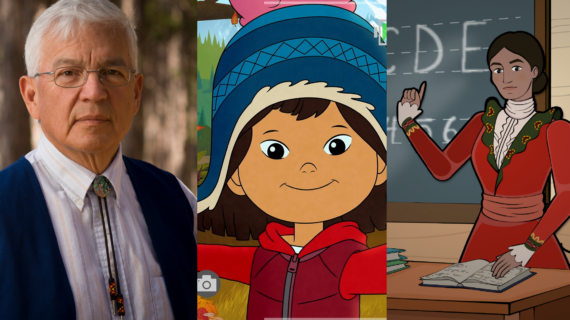
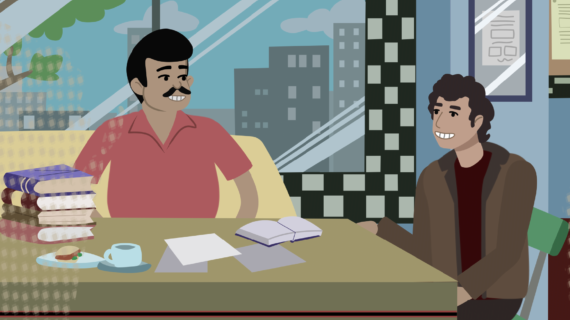
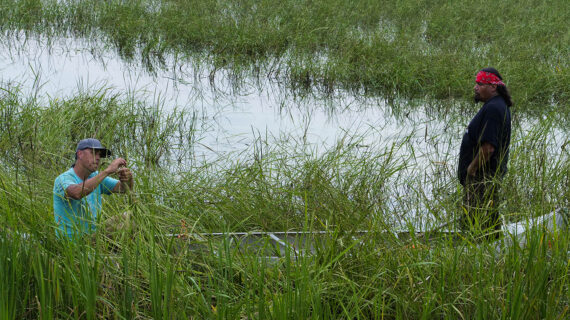
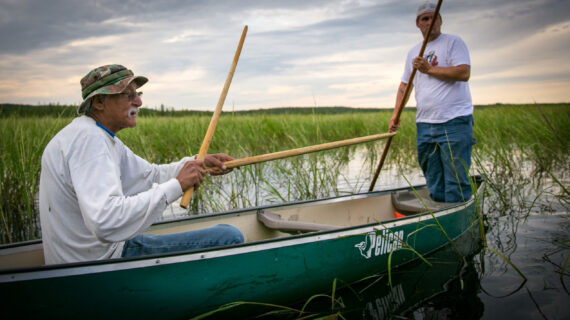

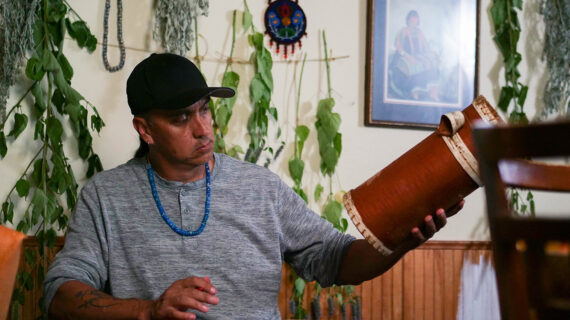


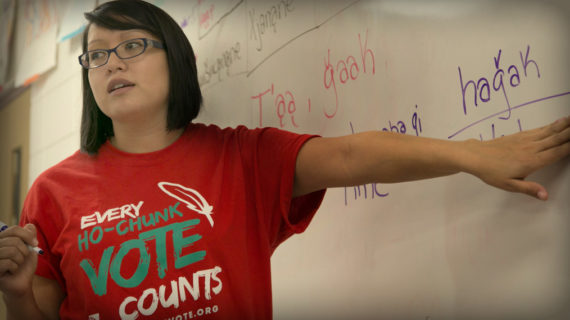

Follow Us